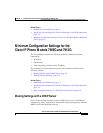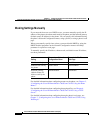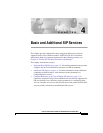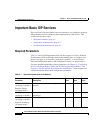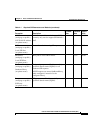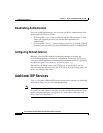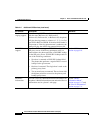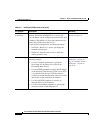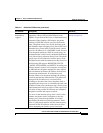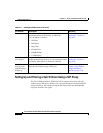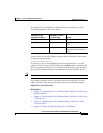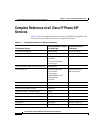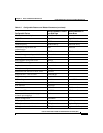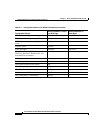
4-7
Cisco IP Phone Models 7905G and 7912G Administrator Guide (SIP)
OL-4277-01
Chapter 4 Basic and Additional SIP Services
Additional SIP Services
NAT gateway Network Address Translation (NAT) supports port
mapping and forwarding to standard default SIP
signaling port 5060 and media base port 16384, or other
ports as configured for the Cisco IP Phone. Media ports
are evenly numbered from the base port. NAT must
support multiple port mappings. The phone can use up
to four media ports to handle conference calls on both
lines. For example, if media base port 16384 is used for
one call, the next call uses port 16386 and other calls
will use ports 16388 and 16390. (Routers such as
D-Link, WinRoute, and WinProxy may not route
correctly if both caller and callee are behind the same
NAT.)
To configure the phone to work in a NAT environment,
make the following settings:
• Use the StaticRoute parameter to specify the LAN
IP address of the NAT through which the phone
will communicate.
• Use the NATIP parameter to specify the WAN IP
address of the NAT through which all external SIP
user agents will communicate.
• Optionally use the SIPPort parameter to specify a
new port for SIP messages.
• Optionally use the MediaPort parameter to specify
a new base port for RTP media.
See the “Network
Parameters” section on
page 8-2 and the “SIP
Parameters” section on
page 8-9.
Table 4-2 Additional SIP Services (continued)
SIP Service Description Reference



